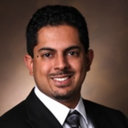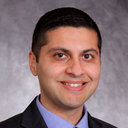Stress hyperglycemia and surgical site infection in stable nondiabetic adults with orthopedic injuries.
Ключови думи
Резюме
BACKGROUND
Hyperglycemia in nondiabetic patients outside the intensive care unit is not well defined. We evaluated the relationship of hyperglycemia and surgical site infection (SSI) in stable nondiabetic patients with orthopedic injuries.
METHODS
We conducted a prospective observational cohort study at a single academic Level 1 trauma center over 9 months (Level II evidence for therapeutic/care management). We included patients 18 years or older with operative orthopedic injuries and excluded patients with diabetes, corticosteroid use, multisystem injuries, or critical illness. Demographics, medical comorbidities (American Society of Anesthesiologists class), body mass index, open fractures, and number of operations were recorded. Fingerstick glucose values were obtained twice daily. Hyperglycemia was defined as a fasting glucose value greater than or equal to 125 mg/dL or a random value greater than or equal to 200 mg/dL on more than one occasion before the diagnosis of SSI. Glycosylated hemoglobin level was obtained from hyperglycemic patients; those with glycosylated hemoglobin level of 6.0 or greater were considered occult diabetic patients and were excluded. SSI was defined by a positive intraoperative culture at reoperation within 30 days of the index case.
RESULTS
We enrolled 171 patients. Of these 171, 40 (23.4%) were hyperglycemic; 7 of them were excluded for occult diabetes. Of the 164 remaining patients, 33 were hyperglycemic (20.1%), 50 had open fractures (6 Type I, 22 Type II, 22 Type III), and 12 (7.3%) had SSI. Hyperglycemic patients were more likely to develop SSI (7 of 33 [21.2%] vs. 5 of 131 [3.8%], p = 0.003). Open fractures were associated with SSI (7 of 50 [14%] vs. 5 of 114 [4.4%], p = 0.047) but not hyperglycemia (10 of 50 [20.0%] vs. 23 of 114 [20.2%], p = 0.98). There was no significant difference between infected and noninfected patients in terms of age, sex, race, American Society of Anesthesiologists class, obesity (body mass index > 29), tobacco use, or number of operations.
CONCLUSIONS
Stress hyperglycemia was associated with SSI in this prospective observational cohort of stable nondiabetic patients with orthopedic injuries. Further prospective randomized studies are necessary to identify optimal treatment of hyperglycemia in the noncritically ill trauma population.
METHODS
Therapeutic study, level III.




